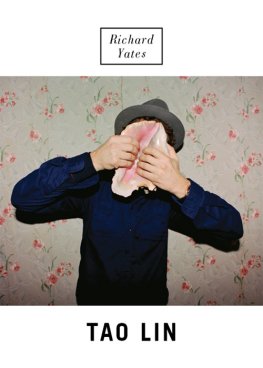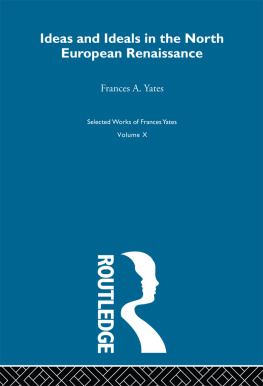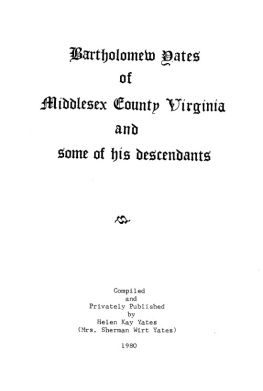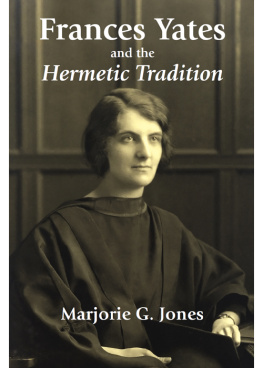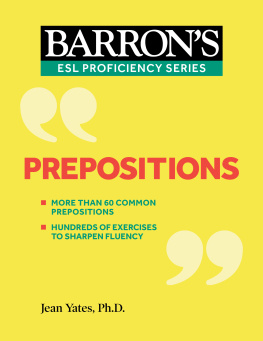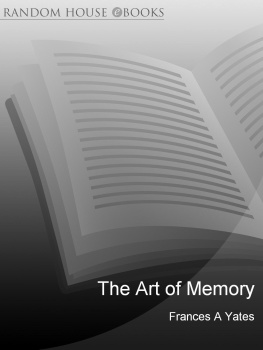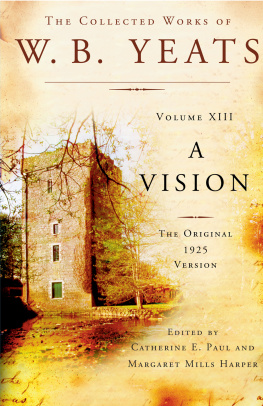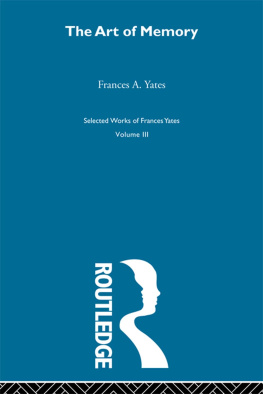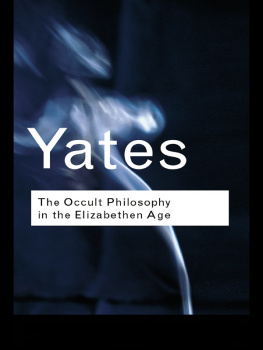FRANCES YATES
SELECTED WORKS
FRANCES YATES
Selected Works
VOLUME I
The Valois Tapestries
VOLUME II
Giordano Bruno and the Hermetic Tradition
VOLUME III
The Art of Memory
VOLUME IV
The Rosicrucian Enlightenment
VOLUME V
Astraea
VOLUME VI
Shakespeares Last Plays
VOLUME VII
The Occult Philosophy in the Elizabethan Age
VOLUME VIII
Lull and Bruno
VOLUME IX
Renaissance and Reform: The Italian Contribution
VOLUME X
Ideas and Ideals in the North European Renaissance
First published 1982 by Routlcdge
Reprinted by Routledge 1999
2 Park Square, Milton Park, Abingdon, Oxon, OX14 4RN
Simultaneously published in the USA and Canada
by Routledge
270 Madison Ave, New York NY 10016
First issued in paperback 2010
Routledge is an imprint of the Taylor & Francis Group
1982 Routledge
Publishers note
The publisher has gone to great lengths to ensure the quality of this reprint but points out that some imperfections in the original book may be apparent.
British Library Cataloguing in Publication Data
A CIP record of this set is available from the British Library
Library of Congress Cataloging in Publication Data
A catalogue record for this book has been requested
ISBN 978-0-415-22051-4 (hbk) (Volume 8)
ISBN 978-0-415-60607-3 (pbk) (Volume 8)
10 Volumes: ISBN 978-0-415-22043-9 (Set)
Frances A. Yates
LULL & BRUNO
COLLECTED ESSAYS
VOLUME I
Preface
FRANCES YATES DIED after a brief illness, early on the morning of 29 September 1981, at the age of nearly eighty-two. Some months before she fell ill, she had prepared this volume, intended as the first of several reprinting the masterly essays, most of them published first in the Journal of the Warburg and Courtauld Institutes, she had written during a remarkable career of single-minded and passionate scholarship. This book is the last to contain prefaces by Dame Frances, placing the essays both in her own oeuvre and in the synthesis of Renaissance thought to which she had devoted her life. She had already attended to the political dimension in her Astraea: The Imperial Theme in the Sixteenth Century (1975), which is built round her great study of Queen Elizabeth as Astraea. That essay was, with her book on The French Academies of the Sixteenth Century (1947), the peak of her achievement in her forties. (Themes from the two were taken up again in The Valois Tapestries (1959; second edition 1975).) The essays here reprinted are the first sketches, dating from 1939 to 1960, for the grand design of Giordano Bruno and the Hermetic Tradition (1964). They contain much material not used in that book, however, and they also look forward to the other superb achievement of Frances Yatess seventh decade, The Art of Memory (1966). With these two books she at last attained in the wider world the deserved reputation she had long held among Renaissance specialists.
The studies reprinted here demonstrate not only the range of their authors learning but her determination to go to the root of a problem. In order to understand the thought of Giordano Bruno, Dame Frances found it necessary to investigate the role of Lullism in the Renaissance and this led her back three centuries to the origins of the Art of Ramon Lull. The first two articles in this volume took her into a region of European thought that, in the 1950s, was virtually unknown to scholars outside Spain. Even in Spain the study of Lulls works had been mainly confined to those (a minority) preserved in Catalan and had been concentrated on Lulls poetry and novels, seen in virtual isolation. The fact that the Lullian Art and philosophy were at the heart of all Lulls writings had been perceived by very few scholars. It is characteristic of Dame Frances that she set out, undaunted by the lack of guides, to explore the huge unclimbed mountain of Lullian thought.
The first article here, by its discovery of the cosmological basis of Lulls philosophy, especially his elemental theory, placed him squarely in an intelligible intellectual tradition. Not satisfied with having thus re-opened the problem of Lull and his Art, Dame Frances went on (in the second article here) to suggest a source for the Arts most striking feature, the connexion between the divine attributes and the elemental theory. This she found in the great Irish philosopher of the ninth century, John Scotus Erigena. The revelation that Lull not only drew on the general Neoplatonic tradition but on the mystical version of Neoplatonism represented by Erigena goes far to explain his attraction for such Renaissance thinkers as Giordano Bruno, in whom Neoplatonic ideas are combined with Hermeticism and Cabalism. Dame Frances has acknowledged that writing her two articles on Lull was the hardest task I have ever undertaken. The task proved worthwhile. Erigena, Lull and Bruno, often viewed as isolated figures in the history of ideas, were illuminated anew by being seen as linked in a Coherent line of development.
Because of her book, Giordano Bruno and the Hermetic Tradition, Dame Francess work on Bruno is far more widely known than her articles on Lull. The four last studies collected here illustrate her investigations of Bruno over a span of some forty years, from 1939 to 1981, though her interest in the Italian magus goes back to her own scholarly beginnings, in the mid-1920s. They chart a reversal of images which has transformed the standard picture of Bruno as a martyr for the liberty of conscience or the advance of science into a man who died for Renaissance occult philosophy and magic. The last article, in its discussion of the relation between Bruno and Dee, is characteristic of its author in that it seeks to make the reader aware how many vital questions still remain to be answered. For Dame Frances there was no such thing as a definitive statement of a problem. For her one question led on to another and there were always new intellectual discoveries to be made.
Dame Frances did not live to read the proofs of this volume, which has therefore been seen through the press by the undersigned. As admirers of Dame Frances they have attempted to edit these essays in the way she would have done. They hope to ensure that further volumes of Collected Essays will appear. They know that Dame Frances wished to acknowledge her debt to D. P. Walker in particular, and to Joanna Harvey-Ross, as well as to her publishers. To these they are also grateful, as well as to Anne Marie Meyer for indispensable help and to Judith Wardman for making the index and for incidental vigilance with the proofs.


